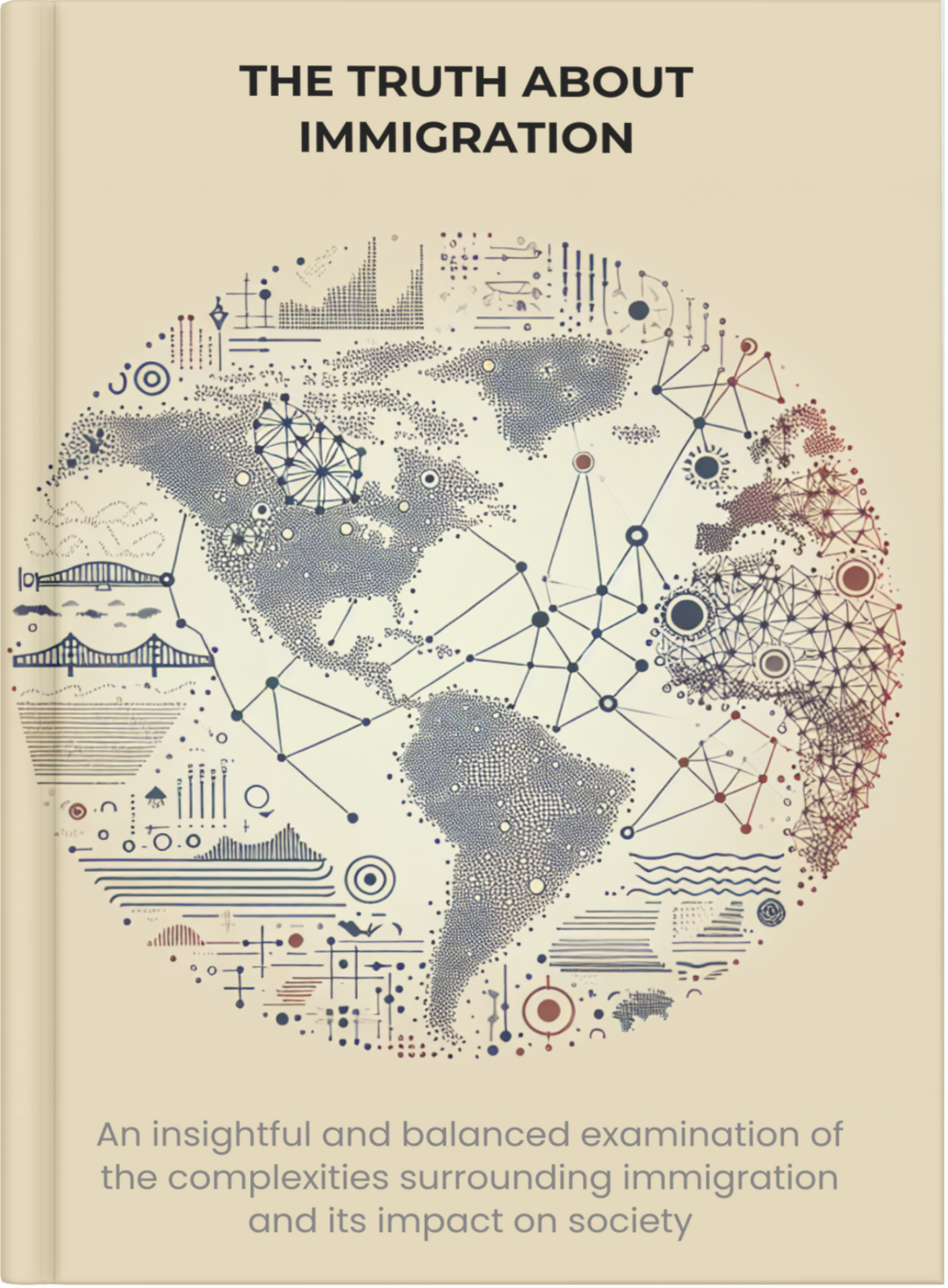
The Truth About Immigration
Zeke Hernandez
The book 'The Truth About Immigration' by Zeke Hernandez provides a comprehensive analysis of immigration, addressing common misconceptions, the economic and social impacts, and the policies that shape immigration. It aims to present a balanced view, supported by data and real-life stories, to foster a more informed and empathetic understanding of the topic.
0:000:00
Keypoint 1: Common Misconceptions About Immigration
One of the most pervasive misconceptions about immigration is that immigrants take jobs away from native-born citizens. This belief is often fueled by economic anxieties and political rhetoric, but it does not hold up under scrutiny. Numerous studies have shown that immigrants often take jobs that native-born citizens are unwilling to do, particularly in sectors like agriculture, construction, and service industries. These roles are essential for the economy but are often low-paying and labor-intensive, making them less attractive to the native workforce.
Another common misconception is that immigrants are a drain on public resources. Critics argue that immigrants consume more in public services, such as healthcare and education, than they contribute in taxes. However, research indicates that immigrants contribute significantly to the economy through taxes and social security payments. In many cases, they pay more in taxes than they receive in benefits. Moreover, the children of immigrants often achieve higher levels of education and income, further contributing to the economy in the long run.
There is also a widespread belief that immigrants increase crime rates. This misconception is particularly damaging as it fosters fear and xenophobia. However, data consistently shows that immigrants are less likely to commit crimes than native-born citizens. In fact, higher levels of immigration are often associated with lower crime rates. This is partly because immigrants have a strong incentive to avoid legal trouble, as it could jeopardize their residency status.
Lastly, some people believe that immigrants do not assimilate into the host country’s culture. This misconception overlooks the fact that assimilation is a two-way street. While immigrants do bring their own cultural practices, they also adopt many aspects of the host country’s culture. Over time, this cultural exchange enriches both the immigrant community and the broader society. Language acquisition, participation in civic activities, and intermarriage are just a few examples of how immigrants integrate into their new communities.
Addressing these misconceptions is crucial for creating a more informed and empathetic dialogue about immigration. By understanding the realities of immigration, we can better appreciate the contributions that immigrants make to our society and economy.
Another common misconception is that immigrants are a drain on public resources. Critics argue that immigrants consume more in public services, such as healthcare and education, than they contribute in taxes. However, research indicates that immigrants contribute significantly to the economy through taxes and social security payments. In many cases, they pay more in taxes than they receive in benefits. Moreover, the children of immigrants often achieve higher levels of education and income, further contributing to the economy in the long run.
There is also a widespread belief that immigrants increase crime rates. This misconception is particularly damaging as it fosters fear and xenophobia. However, data consistently shows that immigrants are less likely to commit crimes than native-born citizens. In fact, higher levels of immigration are often associated with lower crime rates. This is partly because immigrants have a strong incentive to avoid legal trouble, as it could jeopardize their residency status.
Lastly, some people believe that immigrants do not assimilate into the host country’s culture. This misconception overlooks the fact that assimilation is a two-way street. While immigrants do bring their own cultural practices, they also adopt many aspects of the host country’s culture. Over time, this cultural exchange enriches both the immigrant community and the broader society. Language acquisition, participation in civic activities, and intermarriage are just a few examples of how immigrants integrate into their new communities.
Addressing these misconceptions is crucial for creating a more informed and empathetic dialogue about immigration. By understanding the realities of immigration, we can better appreciate the contributions that immigrants make to our society and economy.

